Yoga vs weight training – which is better? The answer is not as straightforward as you think. Both have their pros and cons. And in fact, they can complement each other to achieve a stronger and healthier body. Whether you’re a weightlifter or a yogi, you can improve your practice by cross-training.
In this blog, I’ll cover the following:
- Pros & Cons Of A Consistent Yoga Practice
- Pros & Cons Of Consistent Weight Training
- Yoga Or Weights: Which is better for building muscle? (the not so simple answer)
- How to Balance Yoga And Weight Training
- What Is The Ideal Workout Schedule?
- Can You Weight Train And Practice Yoga On The Same Day?
Pros & Cons Of A Consistent Yoga Practice
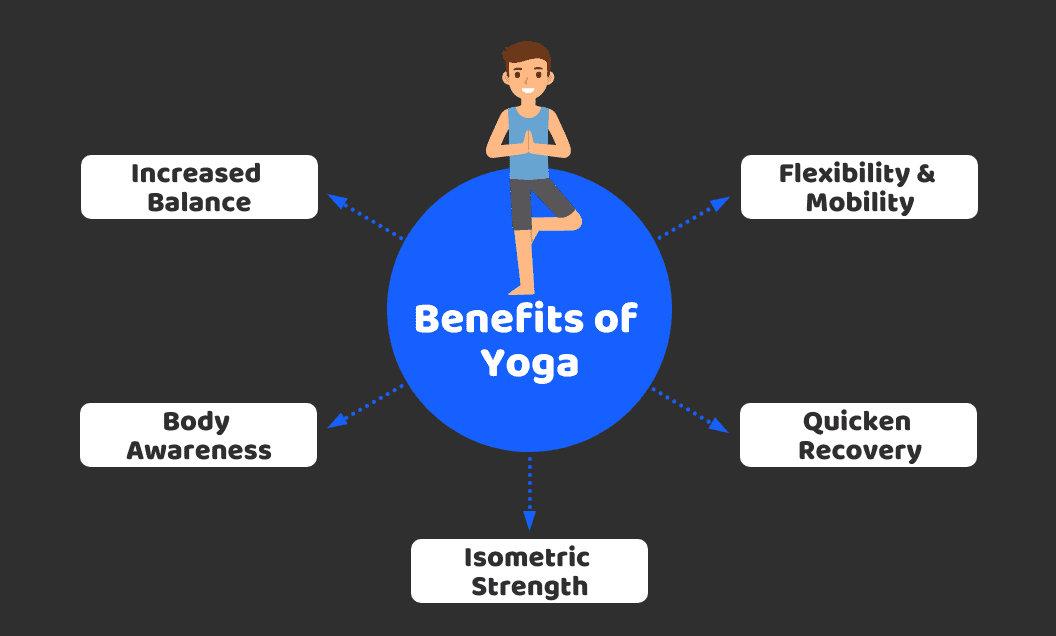
A consistent yoga practice shares many benefits of a traditional workout program such as muscle growth, strength gain, and stress relief from endorphins. However, yoga distinguishes itself from other workouts such as lifting or running, by combining breath-work and balance with strength and mobility to achieve physical and MENTAL well-being.
The combination of improving your flexibility through active stretching increases your mobility and strength, while incorporating breath-work reduces stress, lowers blood pressure, and provides overall better mental clarity.
However, for the purpose of this blog, I want to focus on some of the most noticeable physical benefits of doing yoga 2-3x or more per week. These include:
- Balance
- Body awareness
- Isometric strength
- Flexibility, mobility, and range of motion
- Recovery
+ Yoga For Balance
Balance is an important skill you use every day, because walking on two legs is no easy task – just look at toddlers. But balancing isn’t just skill, it also requires strength, stability, and muscle awareness.
A consistent yoga practice builds your balance by strengthening and bringing awareness to the muscles around joints such as your ankle, knee, and hip. This leads to stronger joint stabilization, which, as a plus, prevents ankle and knee injuries.
+ Yoga For Body Awareness: But What Is Body Awareness?
Body awareness is the ability to know which parts of your body are engaged or relaxed, and where they are in relation to the rest of your body. This sense of awareness is more important than you think and not just for working out.
It helps you through your everyday life, allowing you to notice if you’re holding on to tension in your body that can contribute to stress, to fix your posture when you’re slouching, and to be aware of your breathing so that you can make sure you don’t overreact to unfavorable situations.
But you might ask, “how does yoga help with body awareness?” I’ll tell you, yoga places an emphasis on correct body alignment, muscle engagement, and joint alignment through every pose – developing body awareness.
The isometric nature of practicing yoga postures allows you to concentrate on many different facets of your body — core engagement, alignment, breathing — and this helps to develop body awareness in ways that other forms of fitness do not.
+ Isometric Strength with Yoga: Why It’s Important
Isometric strength is the ability to hold and maintain a push, pull, or stagnate position for a period of time. This is the most essential and basic form of strength needed to stabilize your joints, hold positions, and main good posture.
Yoga is unique in developing isometric strength, because many of the exercises found in strength-based yoga focus on holding challenging positions for a period of time. This leads to strengthening and developing deeper muscle fibers and smaller supporting muscles as larger muscles become fatigued.
You might think, “Awesome, but what does that mean for me?” Here’s the thing, by developing isometric strength, you strengthen your joint stability, increase your ability to quickly recruit muscles, and increase muscle endurance.
This lets you train harder and perform better at other sports.
+ Yoga for Flexibility, Mobility, and Range of Motion
Another major benefit of yoga is its focus on flexibility. Having a good degree of flexibility can help lower your risk of injury from pulling a muscle, overextending a joint, or injuring a ligament or tendon.
However, one thing that traditional yoga doesn’t address is mobility or the ability to generate power from a stretched or extended position. On the other hand, strength-based yoga such as Man Flow Yoga addresses both mobility and flexibility.
Strength-based yoga increases your mobility by developing muscle activation (strength) in conjunction with flexibility, or an extended position. Think about it – if you can’t get to the bottom of a squat, you aren’t getting the maximum strength through your full range of motion.
But it’s dangerous to just try to squat deeper and deeper without first developing the mobility for it. And that’s where strength-based yoga can help, by strengthening and lengthening your muscles, ligaments, and allowing your joints to create the space needed for deeper movements.
+ Recovery
Adding restorative focused yoga to your routine will help you recover quicker for your next work out. Yoga is fantastic for recovery. Doing restorative-focused yoga (also called yin yoga) helps your muscles, your central nervous system, and your joints recover from the strenuous workouts you put it through.
This is good for many reasons — not only does it help you get back to your workouts quicker, but it also helps to decrease the risk of injury from overtraining, helps you feel better during your workouts (more fluid motion, less joint discomfort), and even increase strength in the long-run.
– Negatives Of Only Practicing Yoga
Traditional yoga aims to be an all-encompassing workout, but yoga isn’t the perfect workout. It does a great job of targeting your lower-body and core, but it just doesn’t give you a comprehensive workout for your upper body. This is because yoga primarily involves pushing exercise. This isn’t just yoga, when you’re doing any bodyweight exercises, unless you have resistance (weights), a pull-up bar, or a similar external resistance, it’s not possible to do strength work that involves pulling.
What does this mean for your body? If you only practice pushing motions, you’ll most likely have muscular imbalances – resulting in shoulder pain. Many practitioners of yoga often suffer from this, because their developed chest and frontal shoulders pull and hunch their body forward – leading to discomfort and pain.
While yoga is great for building strength in your upper-body through Chaturangas (yoga push-ups), it lacks pulling exercises that incorporate resistance such as pull-ups or rows to keep your shoulders healthy.
Although you can build a high level of muscular endurance, yoga just doesn’t develop maximum strength for your body. So if you’re really looking to pack on muscle to your upper-body, to build a bigger chest, bigger shoulders, and pump up those biceps, you’ll need to do more than just yoga.
The bottom line is that yoga or bodyweight exercises alone do not provide as much resistance as weights — limiting your overall muscle growth.
Pros & Cons Of Consistent Weight Training
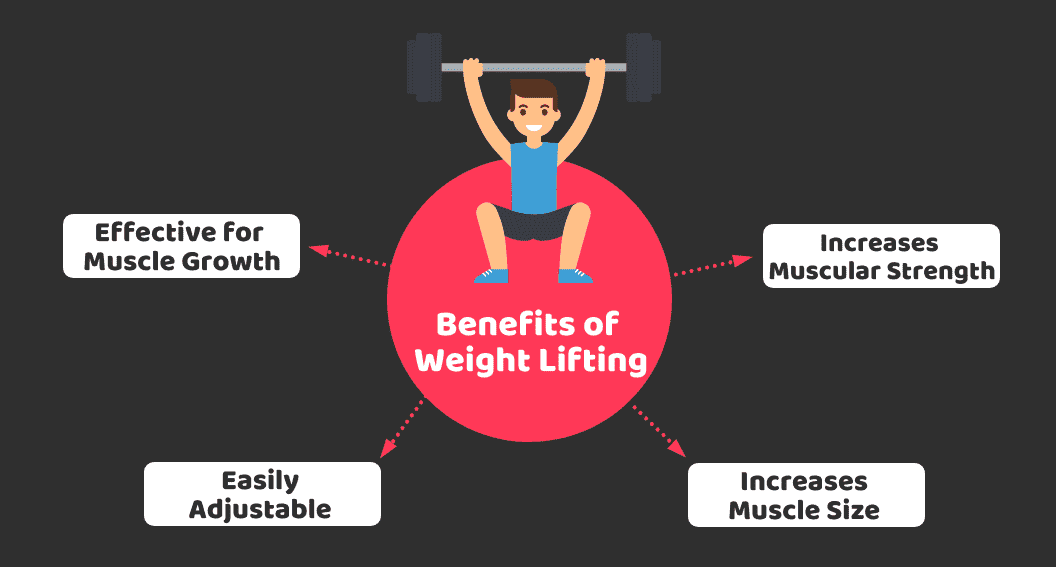
There’s a reason why weight training is one of the most popular forms of exercise in the world, because there is no better form of exercise for effectively and systematically building muscle. While many of us want muscle because we want to look a certain way, having lean muscle mass is also one of the best indicators of overall physical fitness.
+ Weight Training Is Highly Effective For Muscle Growth
Building muscle with weight training is highly effective because it’s easy to load your muscles with the appropriate amount of tension to facilitate muscle growth. But unlike bodyweight exercise, we’re able to determine the exact amount of resistance we want to utilize for a given exercise.
When it comes to building muscle, we want to focus on exercises that we can only perform for a limited number of reps, or for a few seconds. A weighted back squat with 225 pounds performed for 10 repetitions is way more effective at building muscle than 50 repetitions of bodyweight squats.
There’s also a difference between strength and endurance that needs to be considered. Generally speaking, training your strength leads to increases in muscle size, while training your endurance leads to an increase in muscle efficiency, which can actually decrease muscle size.
To an extent, there is some overlap in muscle strength and endurance, but weight training focuses more on making you engage more muscle fibers (muscle strength) and recruiting neighboring muscles to complete exercises, which leads to more muscle growth.
An example of this is during an unweighted bodyweight squat, where you may not be activating your core or glutes as intensely because you don’t need it when you’re only using your body weight (less resistance); but in a heavy weighted squat, you’re forced to focus harder on your form and use all the necessary muscle groups — otherwise, you’ll end up with pain in your back or knees.
To sum it up – bodyweight exercises like yoga can help with building some muscle size through strength and (mostly) endurance work, but weight training is way more effective.
Note: If you want to dive deeper into learning muscle mechanisms check out Bret Contreras.
– Negatives Of Only Practicing Weight Training
Weight training is an incredibly effective form of exercise for building muscle, but there are many aspects of fitness that are not addressed through weight training. Furthermore, the average person doesn’t have the necessary levels of strength, mobility, and body awareness in order to complete them safely and effectively. This is why I recommend using yoga to complement weight training, as it helps to address these weaknesses.
Even if you start at a comfortable weight for your training routine, you could still be limited by your mobility. A prime example is squatting weights. It takes good ankle mobility, hip mobility, and a strong core to safely execute this motion.
What does this mean for you? If you solely focus on weight training, you will for sure develop muscles and a physique that you were aiming for, but by disregarding mobility and a strong foundational level of fitness, you’ll be putting yourself at a higher risk of injury. You also won’t be able to reap the full benefits of the exercise, since you might not be able to complete it through the whole range of motion.
As you continue training it becomes more likely that you’ll injure yourself through repeat stress injuries, and from there you’ll lose the progression you worked so hard to gain. Without properly developing the foundational strength that strength-based yoga offers, weight training can cause more pain than gains for your fitness journey.
Yoga Or Weights: Which is better for building muscle? (the not so simple answer)
The simple answer is both forms of exercise build muscle. All movements that put your muscles under stress can build muscle, as long as there is an adequate amount of muscle tension (it doesn’t matter if it’s from your bodyweight alone or using weights).
There are four overarching factors to consider when aiming to build muscle:
- Frequency – How often you train over a specific amount of time.
- Volume – How many sets and reps you do in total.
- Intensity – How much resistance your muscles have to deal with. Either harder reps or more reps.
- Fatigue – If you train to failure.
The biggest difference in building muscle with yoga versus weight training is that yoga can only get you so far. There aren’t many postures that can challenge your overall strength to the extent that weight training does. That doesn’t mean you won’t get strong with yoga. Yoga is great for building muscle endurance, but that doesn’t correlate with muscular strength — the maximum amount of force your muscles can output.
Yes, there are plenty of postures that make us tired, but muscle fatigue isn’t the only indicator of muscle growth. Doing yoga postures like Warrior 2, High Lunge, or Downward Facing Dog can certainly be challenging when held for 60-90 seconds, but this isn’t an efficient use of your time in terms of building overall muscle.
Yoga can only build so much muscle because the only resistance you have is your body weight. On the other hand, with weight training, you can continue to add more and more weight.
Muscle is developed when you break down existing muscle and as a result, your body goes to repair it, adding and building upon the existing muscle. But this doesn’t happen during your workout, rather muscle repair happens during rest. This is why overtraining can actually be detrimental to your fitness goals.
The main mechanism of muscle growth is muscle tension. To grow muscle, you have to apply a load of stress that’s greater than what your body is already accustomed to. In weight training that is achieved through adding more weight, increasing the amounts of rep, or changing the cadence of the reps. However, for yoga adding a greater load of stress is harder to achieve, since you are working with only your body weight.
Muscle growth is also very dependent on your genetics. There are varying degrees of the effectiveness of working out at any capacity to build muscle. Essentially, YOU are one of the biggest factors to consider when it comes to building muscle.
So if weight training is better than yoga for building muscle. Why should we care about yoga?
Quite simply: If all you do is lift weights, your body will likely break down due to a lack of mobility, muscular imbalances, or overtraining.
Looking For A Program?
If you’re looking to start a yoga routine to lose weight, gain muscles, flexibility, and strength, Man Flow Yoga offers on-demand structured programs that complement your lifestyle and schedule. Give our 7 Day Trial a try. Sign-up below!
Signup for the FREE 7-Day Challenge
How to Balance Yoga And Weight Training
It’s not a competition of which is better— yoga or weight lifting— but rather, yoga can help you get better at weight training, and weight training can improve your yoga practice. Here’s how each benefits the other.
Yoga for Weight Lifters
Yoga is good for all levels of weight lifters, whether you’re brand new, experienced but inconsistent lifter, or lift five times per week. Yoga, especially Man Flow Yoga, builds up the foundational strength and mobility required to perform weight training exercises, and doing restorative yoga helps your body recover to prevent injury from overtraining, and helps you get back to your workouts sooner with less soreness.
Weight Training for Yogis
Weight training helps to correct common yogi imbalances, particularly in the shoulders. By performing pulling motions and strengthening the back muscles that antagonize the pushing muscles, you can correct muscular imbalances that cause shoulder pains — rotator cuff problems, rounded shoulders, excessive soreness in shoulders.
You can also target specific muscle groups so that you can advance your yoga practice — your legs specifically. This is because although yoga can strengthen your legs and allow you to have high levels of muscular endurance, this doesn’t mean that their maximum strength output is strengthened. This can only be done through a load that will stress your legs beyond what they are accustomed to — hence weight training.
What Is The Ideal Workout Schedule?
There is no perfect workout schedule for everyone, but there is a universal process you can use to determine what’s appropriate for you. You need to experiment with your own body and understand the signals that could mean you are overtraining or under training.
And it’s not just how your muscles feel — you also want to assess the recovery of your central nervous system, your joints, ligaments, and tendons, and your overall energy levels to ensure that you’re following a program that is helpful (and not harmful because you’re doing too much).
A good base schedule to work with is:
| MON | TUES | WED | THUR | FRI | SAT | SUN |
| Weights | Yoga | Rest | Yoga | Weights | Rest | Active Recovery / Yoga |
Signs Of Overtraining
If a little exercise is good for you, then a lot of exercise should be great for you! This is a big misconception due to the “no pain, no gain” mentality. The truth is that your body needs time to rest and adapt to the changing stimuli. Your recovery is just as important as your workouts!
If you want to reach your fitness goals, be on the lookout for symptoms of overtraining. If you can do that and avoid pushing yourself too much, you’ll feel better, enjoy your workouts more, and reach your goals in less time.
Here are the most common signs of overtraining:
- Decreased performance: You can’t perform the same routine as effectively anymore.
- Excessive fatigue: You become extremely tired even when you’re not actively training.
- Restless Sleep: Insomnia sets in and sleeping has never been more difficult.
- Nagging Injuries: You reawaken problem areas from the past.
- Moodiness: The compounding of insomnia and exhaustion causes a hormone imbalance, resulting in mood swings.
Signals Of Undertraining
On the other hand, you want to make sure you’re not just going through the motions and being too easy on yourself. Your body adapts to the same style or type of stimuli in 2-3 months, which is a relatively short time. Doing the same routine over and over again without adding weight or challenging yourself with different poses can lead to undertraining. This leads to diminished results and, ultimately, isn’t the best use of your time.
Here are some common signs to undertraining to look out for:
- There’s a lack of progression
- You’re bored
- You’re not safely challenging yourself
But this doesn’t mean that you need to be ready to fall over from exhaustion or unbelievably sore after each workout.
Can You Weight Train And Practice Yoga On The Same Day?
The simple answer is yes. Warming up with strength-based muscle activating yoga postures is beneficial to avoiding injury, and cooling down with more passive yoga poses is a great way to end your workout — maximizing your recovery time. However, if you are doing challenging yoga flows such as the ones that Man Flow Yoga offers, then it would be up to your own fitness level to decide if weight training should be included in the same day.
Sample Yoga & Weight Training on Same-Day Schedule
Example #1 – Opposite times of the day
AM – 45 Minute Resistance Training Session
PM – 30 Minute Yoga Session
Example #2 – Stacking
AM – 30-Minute Strength-Focused Yoga Routine, followed by 30-Minute Weight Training Session
PM – 10 to 20 Minutes of Restorative Yoga Stretching
You CAN do too much in one day and that leads to a lack of form, control, and higher levels of fatigue. It is ultimately up to your own fitness level and discretion to decide how much to do in one day. At Man Flow Yoga, we believe that a well-balanced body is achieved through a consistent yoga practice paired with weight lifting on a schedule that is adapted personally for you.
Happy training,
Dean
Additional Resources
You might be interested in some tips on starting off your yoga practice, so read on! 3 blogs covering some basics.
About the author, Dean Pohlman, Founder & CEO of Man Flow Yoga, Author of Yoga Fitness for Men, Expert on Yoga Fitness for Men.
Looking for non-spiritual, yoga for men workouts?
Learn More About Man Flow Yoga and how it can help you with your fitness goals:
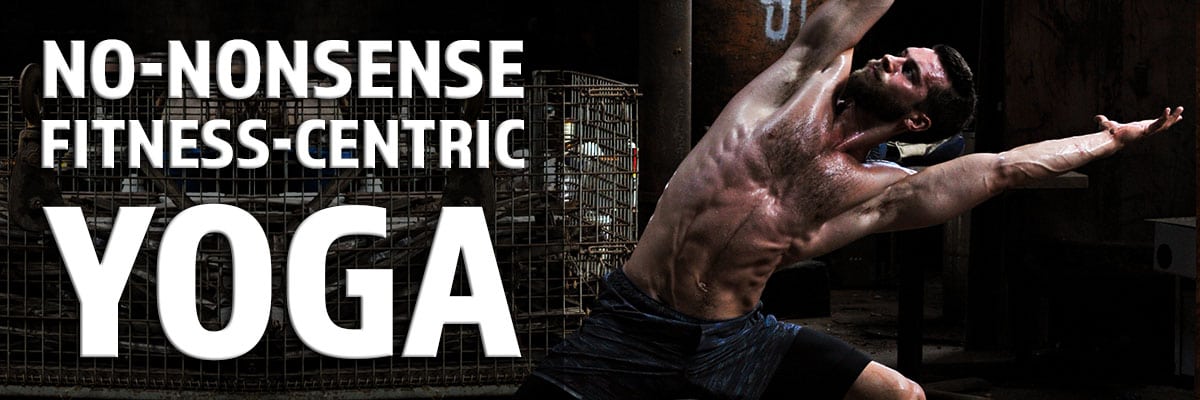 Join Today for Instant Access!
Join Today for Instant Access!
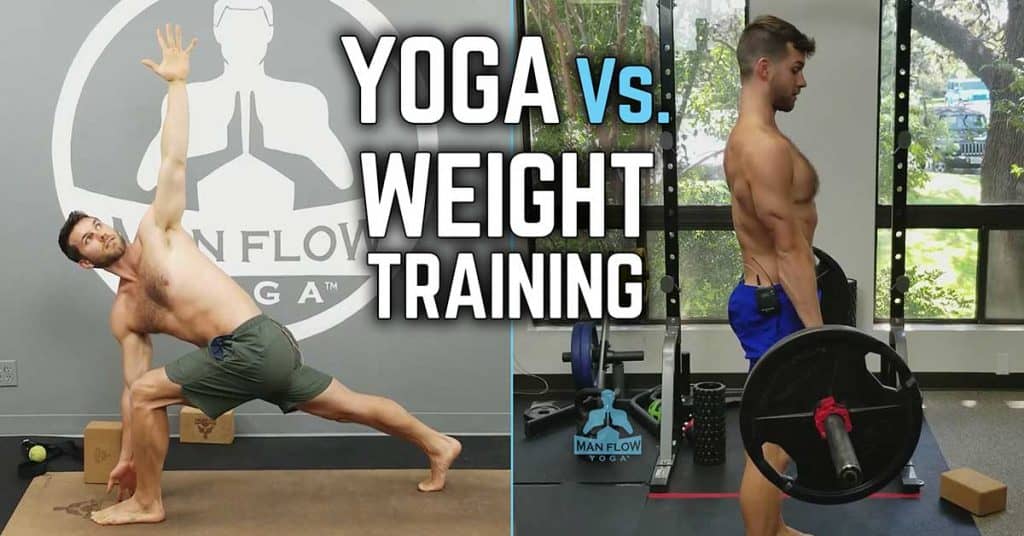
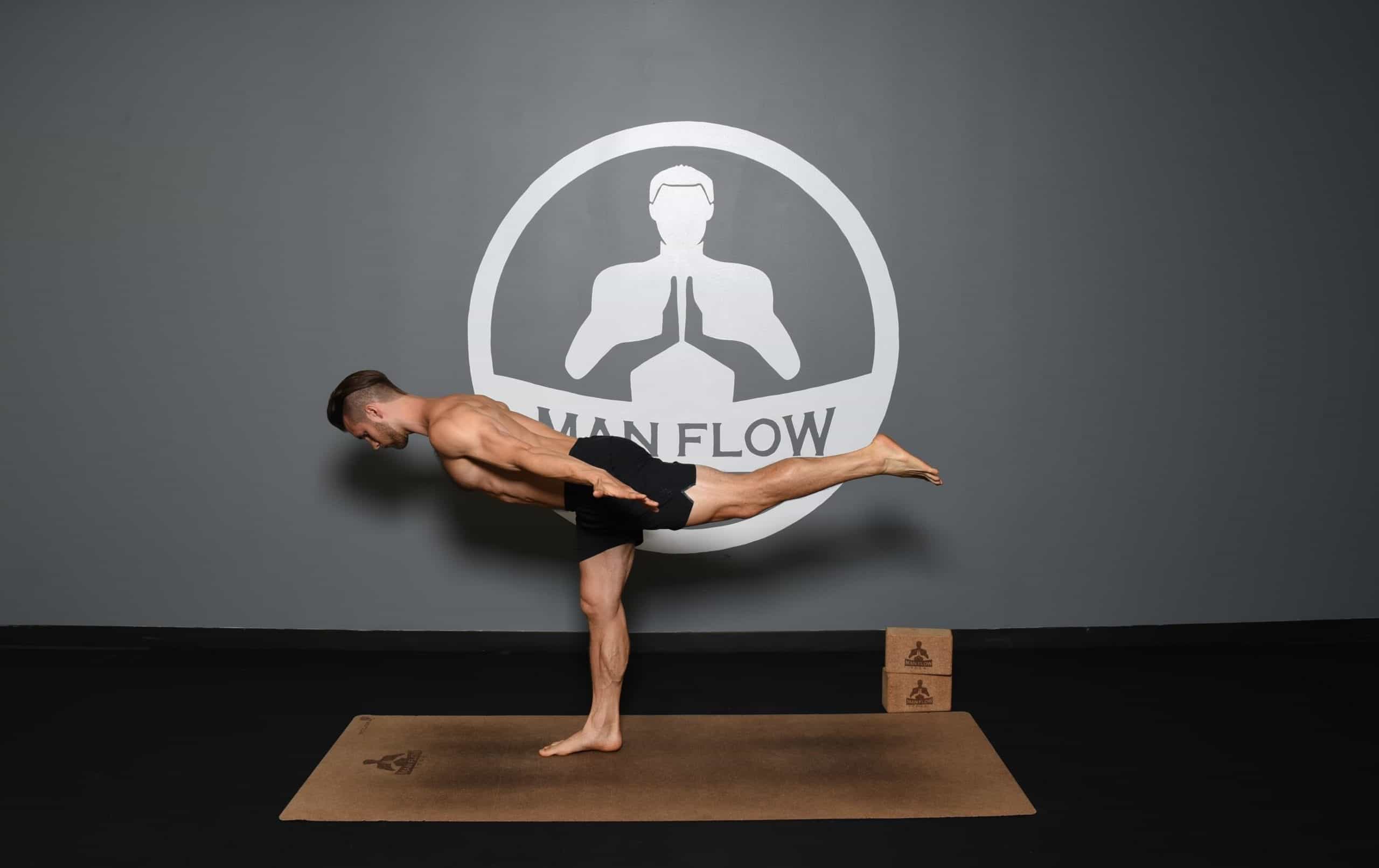



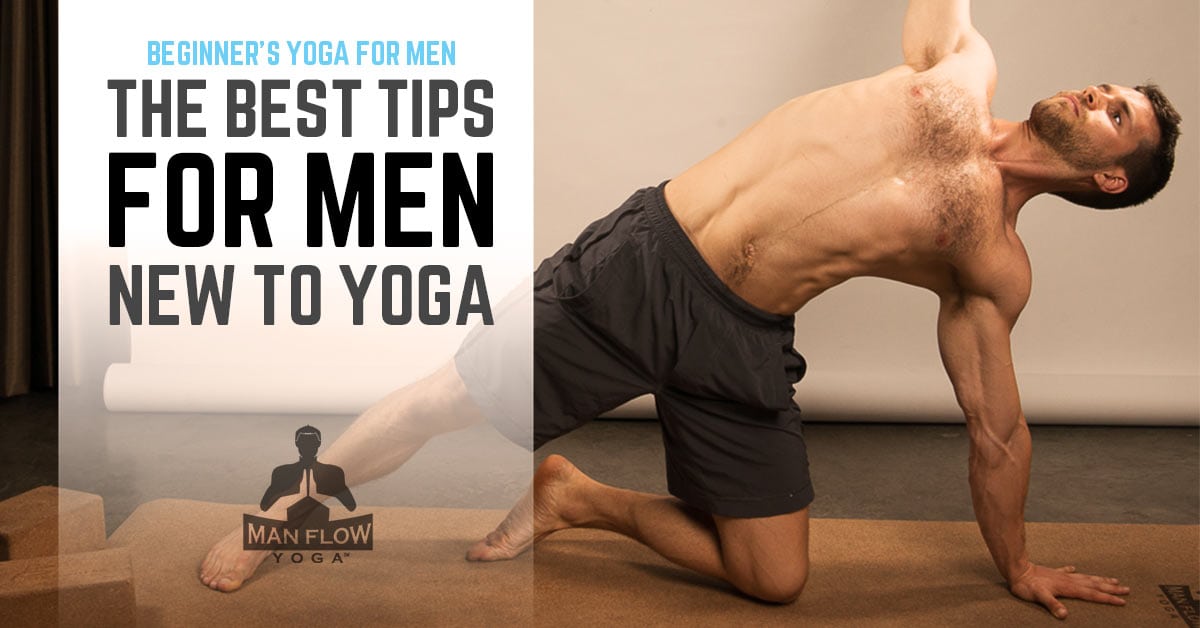
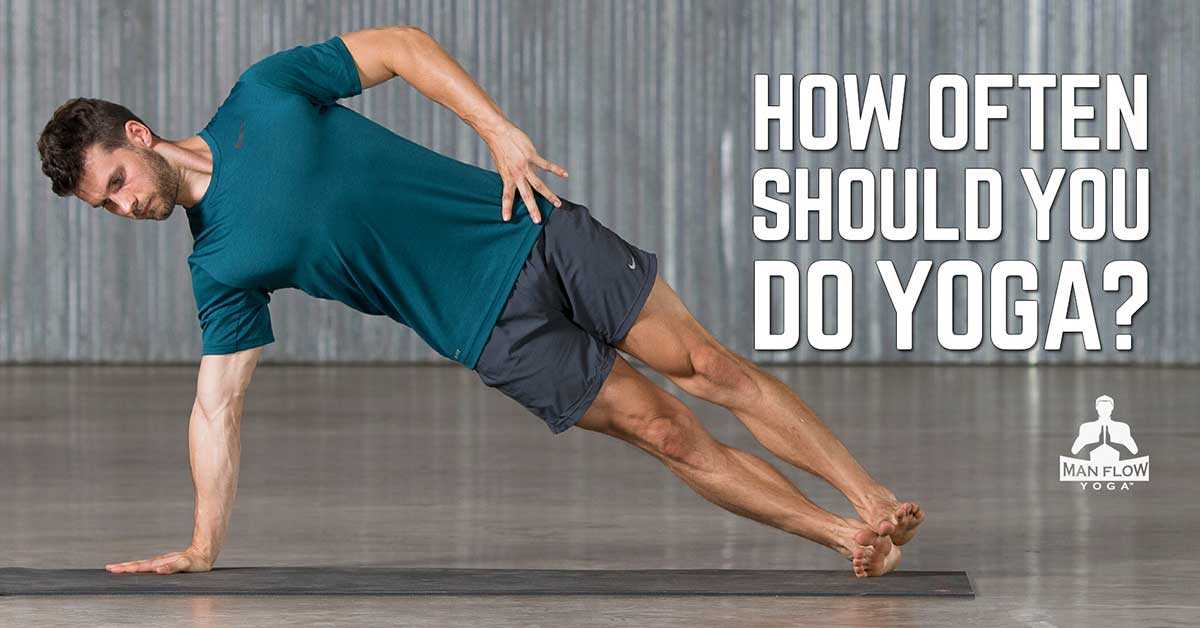
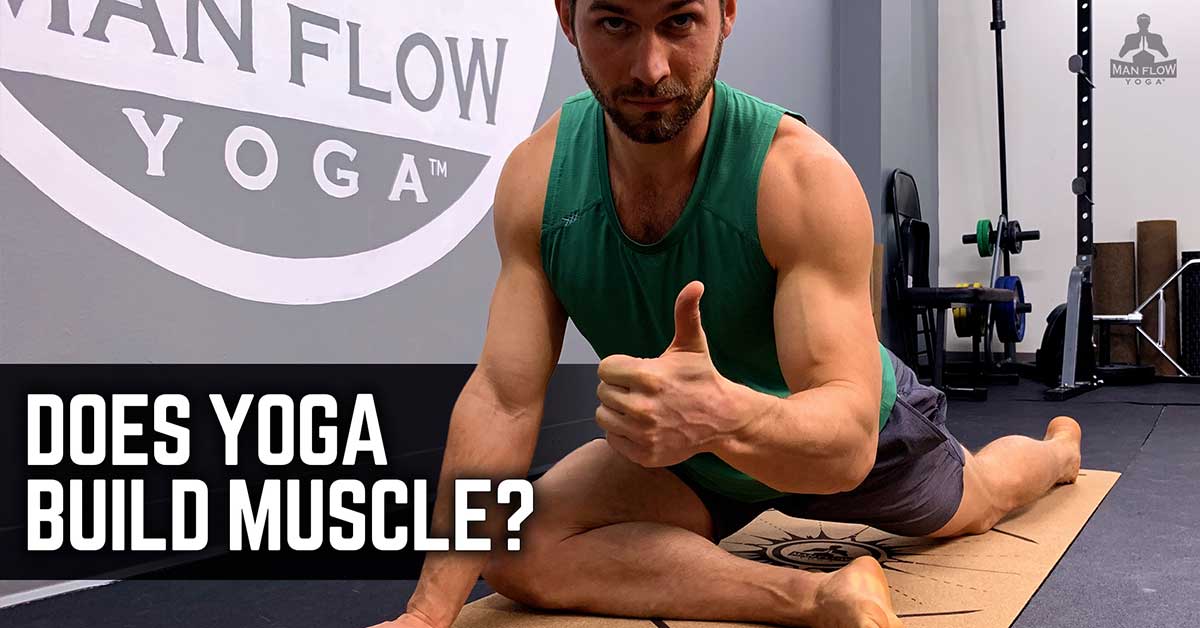


Excellent explanation adding clarity to why it is beneficial to do both – which I do. Thanks Dean.
Hi
I’m trying to sign up but it won’t accept my email
Hey Colin! Please email us at [email protected] and we’ll get you all squared away!
Great blog. Your shoulder program. Mobility program and strengtH foundation program are THE BEST Support fit any exercise program plus for health, good sleep and a firm body all over
Dean, Great explanation and guidance for incorporating weight training with active yoga practice. I have been a member a little over three months now. For someone my age, I turn 70 in September, I find MFY to be challenging and the results have truly surprised me. I have continued to repeat the Strength Foundations course because my goal is to be able to perform each session with good technique and hold the positions for the required times and for me this takes practice. I will be moving on to Beyond SF at the end of this month confident that I will have prepared. Also your Essential courses for neck and wrists and ankles have been very important toward my ability to be consistent and avoiding minor injury. And finally let me add how important the balance regimes are and the benefit I have derived from them will be protective to my mobility and confidence as I get older.
David Brown, Nipomo, CA
Thanks for re-affirming the value of doing both weight lifting and yoga. I perform best at each when I practice both.
Hi Dean, great post about performing weight training and yoga together. I found the need to do pulling exercises particularly interesting. However, how would you incorporate cardio into your suggested schedule? As someone who enjoys running, strength training and yoga, I’d like to understand your thoughts on how to accomplish all three when working out for 45-60 mins a day, six days a week.
When incorporating cardio, the best way to get it to fit into this particular schedule would be to use HIIT during weightlifting sessions. Something like sprints or weighted carries would fit perfectly.
Jesse’s comment here is spot on. Something else to consider – you can combine all of these exercises together into one workout. You could do yoga then running, or running then yoga. Or resistance training then yoga. Or yoga then resistance training. You also don’t have to fit everything in to one week. You could do 2-week cycles instead of 1-week.
Are 2 week cycles really as beneficial as 1 week?
Can you post a schedule that includes upper body and lower body weight training on separate days, yoga and HIIT training included. How many week cycles to I need to do fit all these works in?
If you’re having trouble fitting everything into one week, a 14 day cycle would definitely be as beneficial as 1 week. It all comes down to your own personal goals, abilities, and time availability.
We have programs specifically intended to be done in unison with a weightlifting, so you should check out our Member’s area. A 7 Day Trial is only $1:
https://manflowyoga.com/seven-day-trial/choose/
I am doing yoga my flexibility has increased i am able to do pinchamayurasana hand stand and also do other core asanas, suryanamaskar etc. but i noticed that there is going belly fat and loose muscles now in my body…few years back when i was doing weight training i wasn’t so flexible but more toned and have more strength. and less bulge..especially i got better at deadlifts, squats etc. can with yoga itself we can sustain same level as i was when doing weights
Great question. If you’re looking to lose weight or building muscle and tone your body, yoga won’t do that by itself. We always recommend combining yoga with other forms of fitness, like weight lifting.
very clear and good article easy to understand. Thank you
Really glad to hear you found this article so helpful!